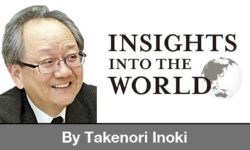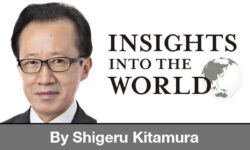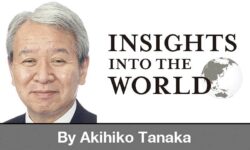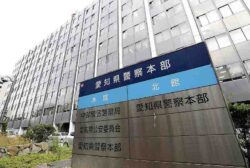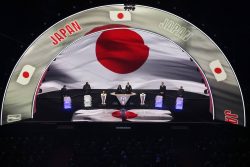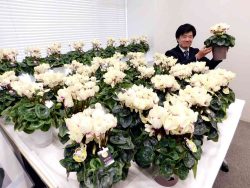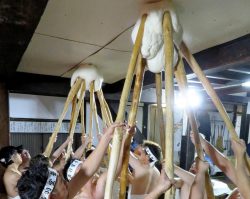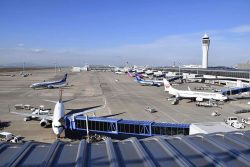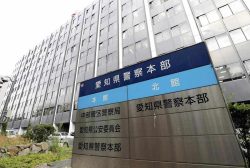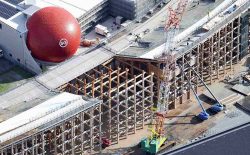13:30 JST, February 10, 2023
The administration of Prime Minister Fumio Kishida in December adopted a set of three new national security and defense strategy documents at a Cabinet meeting. They included the decision to possess counterstrike capabilities, something I had advocated for many years and on many occasions, including an Insights into the World column headlined “Japan should acquire counterstrike ability” on Oct. 3, 2017.
More than 60% of the people surveyed in recent opinion polls supported the government’s decision on the possession of counterstrike capabilities. It is still too early to know if the policies spelled out in the three documents will be backed by budgetary allocations and faithfully implemented in the years ahead. Yet, the adoption of these documents is in itself an epoch-making development for national security policy in postwar Japan. Assertions connected to the erstwhile idea of unarmed neutrality — which constitutes an entirely impractical, utopian pacifism — are now likely to vanish into oblivion.
Japan and Germany were defeated in World War II, and Germany was divided into east and west. Postwar Japan remained undivided in geographical terms but split itself into two camps, with Article 9, Paragraph 2 of the Constitution, which came into force in 1947, emerging as the point of division.
As is well known, Article 9, Paragraph 1 of the Constitution stipulates “the Japanese people forever renounce war” as initially sought by the 1928 Kellogg-Briand Pact — officially the General Treaty for Renunciation of War as an Instrument of National Policy — and later by the United Nations Charter of 1945. In other words, the paragraph reflects what has been accepted across the world.
Paragraph 2 still powerful
However, Article 9, Paragraph 2 states that “land, sea, and air forces, as well as other war potential, will never be maintained,” a clause that is almost unseen anywhere else. Almost all countries have armed forces to defend themselves. It is Paragraph 2 that many Japanese people want changed. However, some media outlets in Japan still insist that “the war-renouncing Article 9 must not be revised,” which distorts the truth and misleads people. There is hardly any support in Japan for getting rid of the provision about renouncing war in Paragraph 1.
When I referred above to “division” in Japan, I meant the conflicting ideas between the group of people seeking to adhere rigidly to the principle of maintaining no war potential and the people preferring to maintain a certain level of war potential by flexibly interpreting the relevant provision.
In 1950, only three years after the enforcement of the postwar Constitution, the Korean War broke out, prompting the establishment of the National Police Reserve (NPR) in Japan, which marked the beginning of the country’s de facto rearmament. Proponents of Article 9, Paragraph 2 vehemently decried the emergence of the NPR. It is widely known that when the San Francisco Peace Conference was held in 1951, a confrontation occurred in Japan between advocates for overall peace involving every relevant country including the Soviet Union, and rivals who favored the signing of either a majority peace pact excluding certain countries or an early peace pact, as drafted by the United States and the United Kingdom to realize the early restoration of postwar independence.
However, “overall peace” was an unattainable goal from the start. On the Korean Peninsula, fierce battles were underway between North Korean troops, backed by the Soviet Union and China, and the U.S.-led United Nations coalition. The Soviet Union participated in the San Francisco conference, submitting a proposal of its own in a bid to revise the U.S.-initiated peace treaty with Japan. The crux of the Soviet proposal was to prohibit Japan from hosting foreign military bases. The United States, however, absolutely needed to retain its bases in Japan. Under these circumstances, it was impossible for the United States to accept the Soviet proposal.
In 1954, the Cabinet of then Prime Minister Ichiro Hatoyama adopted a new interpretation of the Constitution, concluding that it was Japan’s natural sovereign right to possess the minimum capabilities necessary for self-defense, notwithstanding Article 9, Paragraph 2. The Supreme Court in 1959 effectively endorsed the government’s new constitutional interpretation. As of now, this is the official reading of Article 9, Paragraph 2 of the Constitution.
The Self-Defense Forces were formed in 1954 and gradually grew large in scale as defense spending kept increasing in the latter half of the 1950s, when Japan ushered in its so-called high growth period.
But the advocacy for an unarmed Japan based on Article 9, Paragraph 2 remained so steadfast that Liberal Democratic Party governments continued agreeing to many compromises related to the SDF.
It was decided, for example, to refrain from dispatching SDF units overseas; to pursue a policy of exclusive self-defense while depending on the U.S. military for offensive operations; to keep annual defense budgets within 1% of Japan’s gross domestic product; to abide by the self-imposed Three Principles on Arms Exports (which effectively banned arms exports from the 1970s); and to endorse the Japanese academic community’s self-imposed restraints on military research.
Compromises regarding SDF
These principles were mostly adopted in response to demands from opposition parties and media outlets that were critical of what they saw as moves toward Japan again becoming a military power. Many LDP politicians were economic pragmatists, thinking that it was good for Japan to maintain defense capabilities that were just enough to satisfy the United States. They therefore gave no serious consideration to what Japan really needed to do for its own security.
It was the Gulf War of 1990-91 that caused the first of the principles mentioned above to hit a wall. Japan did not take part in operations conducted by an international coalition organized based on United Nations Security Council resolutions. Only in 1992 did Japan finally begin participating in international peacekeeping operations in the region, though in an incomplete way.
Around that time, the Japanese economy entered a phase of stagnation. North Korea embarked on missile and nuclear weapons development in the late 1980s, while China was then in the long-term process of building up its armed forces. In the 21st century, China began ramping up its maritime activities in the waters around the Senkaku Islands in Okinawa Prefecture and the South China Sea, in defiance of international law. The stagnation of the Japanese economy and the deterioration of the international geopolitical situation increasingly exposed the compromises regarding the SDF as a major stumbling block to the security of Japan.
One such example is the lack of close relationships among the military, businesses and universities in Japan. In most foreign countries, it is very common that they are closely tied to each other. Due to the restraints on military affairs research in universities, Japan has lagged far behind in the field of security- and defense-related studies. This is becoming a more serious constraint because of the development of civil-military dual-use technologies. Likewise, the ban on arms exports has limited the customer base of the Japanese defense industry to the SDF alone, leading to the decline of the defense industry. Today, Japan is far behind South Korea in terms of arms exports.
While keeping its military spending to within 1% of its GDP, Japan continued purchasing expensive weapons from the United States. As a result, the SDF’s ammunition and missile inventories remain insufficient and its installations are old, leaving its sustainability in an unbalanced state.
Ukraine war as game changer
It was then Prime Minister Shinzo Abe’s second administration, which began in 2012, that opened a crack in the wall of such traditional security policies in Japan. The Abe Cabinet in 2014 inaugurated the National Security Secretariat, which is responsible for planning and coordinating foreign and defense policies pertaining to national security. In 2015 it devised Japan’s legislation for peace and security. This ditched the country’s principle of fighting exclusively for its own defense without fighting for any foreign nation — which was the prohibition to exercise the right to collective self-defense. The new legislation now allows the SDF to engage in combat in certain situations, such as when U.S. naval vessels, while on missions around Japan to ensure its security, come under an armed attack that seriously threatens Japan’s survival.
This left Japan’s prohibition on having offensive capabilities as the last main bottleneck to ensuring peace and security. Now that North Korea has a suite of advanced missiles and nuclear weapons and China has overwhelmingly greater military capabilities than the North, it is obvious that missile defenses cannot be sufficient to ward off possible attacks. There is no guarantee that the United States would always act to defend Japan at the time Japan desires. Japan should have strike capabilities to unleash counterstrikes against enemy bases in the event of an attack on its territory. Such capabilities should be effective enough to not only prevent the enemy from launching a second attack but also to dissuade it from thinking about attacking Japan in the first place.
I reiterated this strongly during a meeting of the Advisory Panel on Security and Defense Capabilities in 2018. At the time, most of my fellow panel members showed no support. Nevertheless, the government has now adopted the three security and defense strategy documents containing the decision to have counterstrike capabilities. The majority of the Japanese population also supports the possession of such abilities. Ultimately, the ongoing war in Ukraine served as a major game changer.
The war in Ukraine has changed many things. First, it has shown the world the necessity to fight tooth and nail in order to receive sympathy and support. Second, providing a democratic country invaded by a foreign nation with weapons is highly praised, meaning Japan should ease its restrictions on arms exports. Third, the growing interest in military affairs is likely to lead to a change in the restraints on military research in the Japanese academic community.
Japan has thus far handled its security and defense policies as if fighting with one hand tied behind its back. This approach would have been acceptable if the Japanese economy continued its high growth and the United States was overwhelmingly powerful. That time is behind us.
The end of the idea of an unarmed Japan does not mean the end of opposition parties. If opposition parties break with unarmed pacifism and instead adopt the common sense idea of national security, they will be able to stand on an equal footing with the Liberal Democratic Party. Only after that will the opposition parties be able to criticize and compete with the LDP in areas other than security. The adoption of the three security and defense strategy documents could be a major chance for opposition parties to gain wider support from voters.
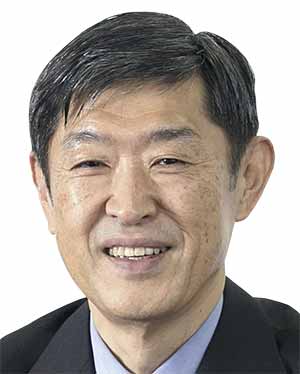
Shinichi Kitaoka
Kitaoka, a professor emeritus at the University of Tokyo specializing in Japanese political and diplomatic history, was the president of the Japan International Cooperation Agency from October 2015 to March 2022.
The original article in Japanese appeared in the Feb. 5 issue of The Yomiuri Shimbun.
"Editorial & Columns" POPULAR ARTICLE
-

Corporate Interim Earnings: Companies Must Devise Ways to Overcome Trump Tariffs
-

Violations of Subcontract Law: Major Automakers Must Eliminate Old Practices
-

Local Governments’ Tax Revenues: Devise Ways to Correct Imbalances in Tax Sources
-
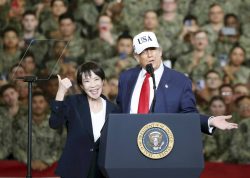
Takaichi’s Summit with Economics-Minded Trump Successfully Advanced Japan’s Security Interests
-

New Nuclear Threat: China Seeking to Follow U.S., Russia in Military Expansion
JN ACCESS RANKING
-

Govt Plans to Urge Municipalities to Help Residents Cope with Rising Prices
-

Japan Prime Minister Takaichi Vows to Have Country Exit Deflation, Closely Monitor Economic Indicators
-

Japan to Charge Foreigners More for Residence Permits, Looking to Align with Western Countries
-

Essential Services Shortage to Hit Japan’s GDP By Up to ¥76 Tril. By 2040
-

Japan GDP Down Annualized 1.8% in July-Sept.



